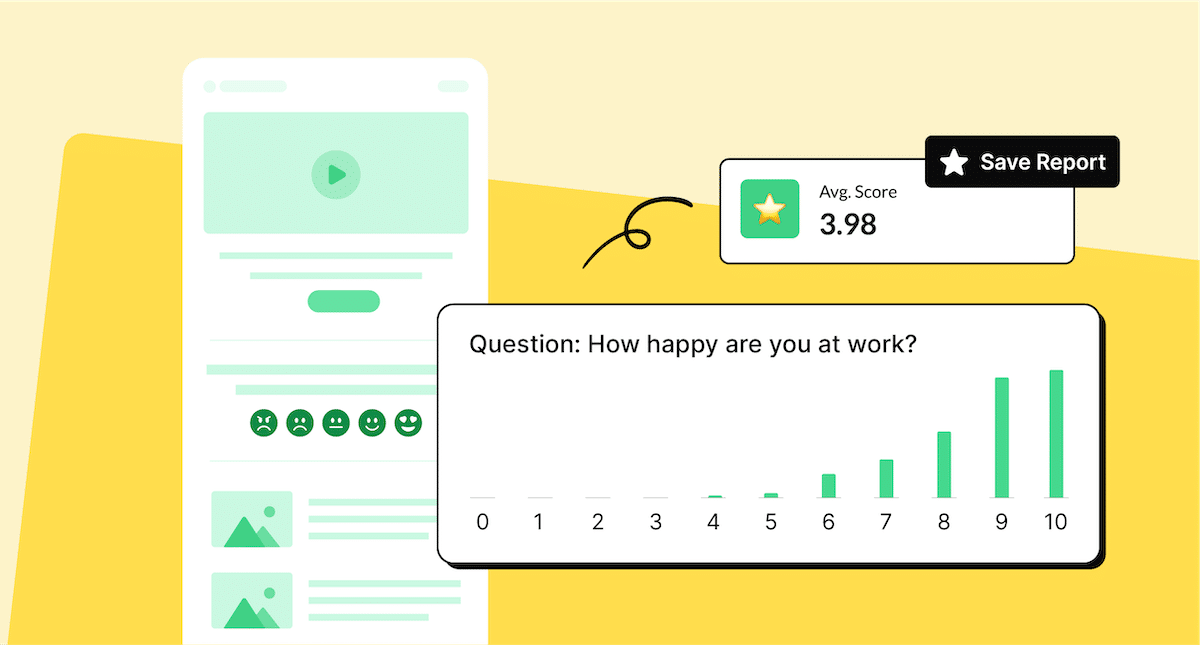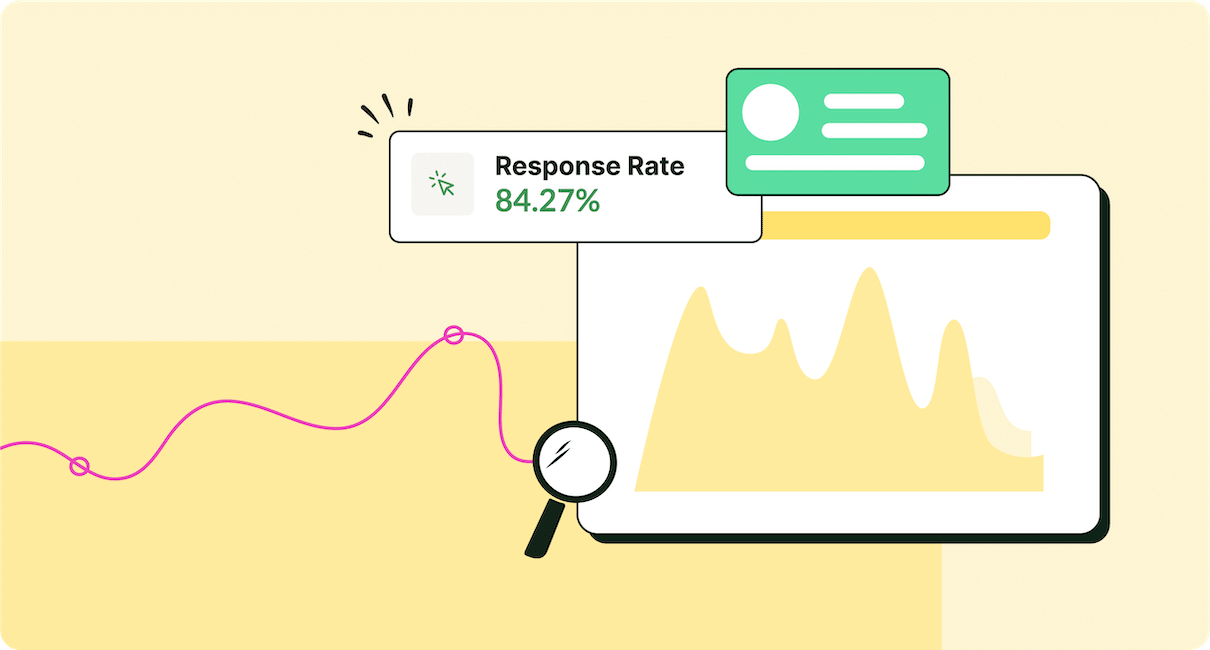The bedrock of any effective internal communications strategy is authentic employee feedback. In order to gather honest and actionable employee insights, you first need to learn how to create anonymous surveys effectively.
Whether your goal is to boost employee engagement, improve workplace retention, or enhance innovation, your strategy has to be informed by data. Making significant improvements is impossible without authentic employee feedback to use as a basis for your planning.
Genuine input from employees provides tangible data that leadership can use towards targeted, well-informed decision-making. Anonymous employee surveys offer the most reliable way to ensure that all employees are comfortable giving honest feedback.
Let’s take a closer look at anonymous surveys, the benefits they bring to your company, and best practices for getting more from your surveys.
See how ContactMonkey’s employee survey features make it easy to start create, send and track pulse surveys in your Outlook and Gmail emails.
Take a self-guided tour of ContactMonkey
See how our key features can streamline your internal communications.
Take product tour

What Is an Anonymous Survey?
Chances are, you’ve completed your fair share of anonymous surveys in your lifetime. If so, you know that an anonymous survey is a set of questions delivered to participants in such a way that no one involved can identify who has submitted the responses.
What you may not know is all the work that happens behind the scenes to ensure that surveys are truly anonymous.
An effective anonymous survey for employees ensures that additional identifying information, including IP or email addresses, are kept private. These details cannot be traceable if your goal is to ensure those survey responses are truthful and unbiased.
Confidential vs Anonymous Surveys
In the workplace, anonymous feedback is entirely separate from all types of individual details. In sum, there is no way for respondents to be identified.
Inversely, responses in a confidential survey are connected to personal information. These details may be recorded in an employee database or provided by staffthemselves at the start of the survey.
However, confidentiality means that the organization pledges to hold the information private. That being said, some designated administrators may access the data.
Anonymous surveys are examples of asynchronous communications that can offer more benefits when it comes to gathering authentic feedback and contextualizing statistics on employee engagement.
Today, employers no longer need to compromise between anonymity and gathering targeted feedback. Unlike Google forms anonymous surveys and other survey platforms, ContactMonkey lets you combine anonymity with powerful analytics.
With ContactMonkey, you can create anonymous surveys while aggregating response data by department, job title, and location.
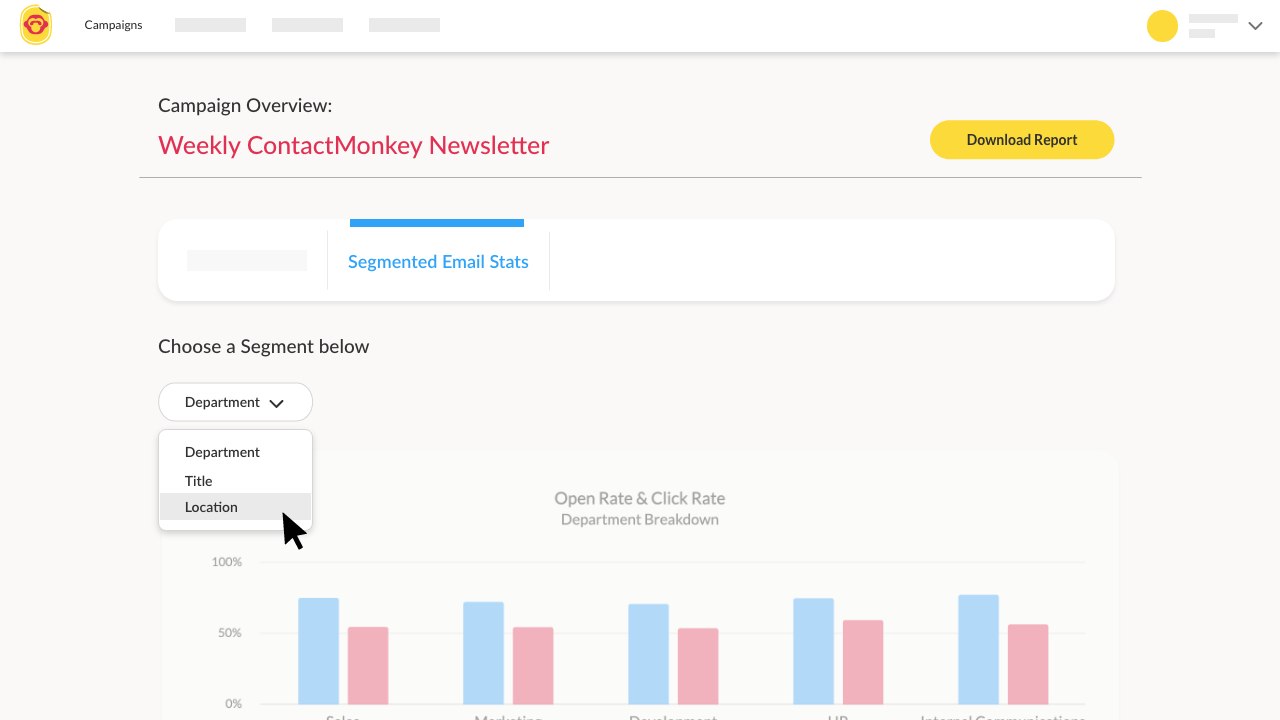
In addition to anonymous surveys, ContactMonkey’s anonymous email tracking allows you to gather email metrics while maintaining your employees’ privacy.
Employees have the guarantee that their responses will not be linked to any individual information, while managers can still learn what respondents share in common.
7 ways to get honest feedback from employee surveys
Will your workforce tell the truth? Foster trust and openness with your employee using these tips.
Download tips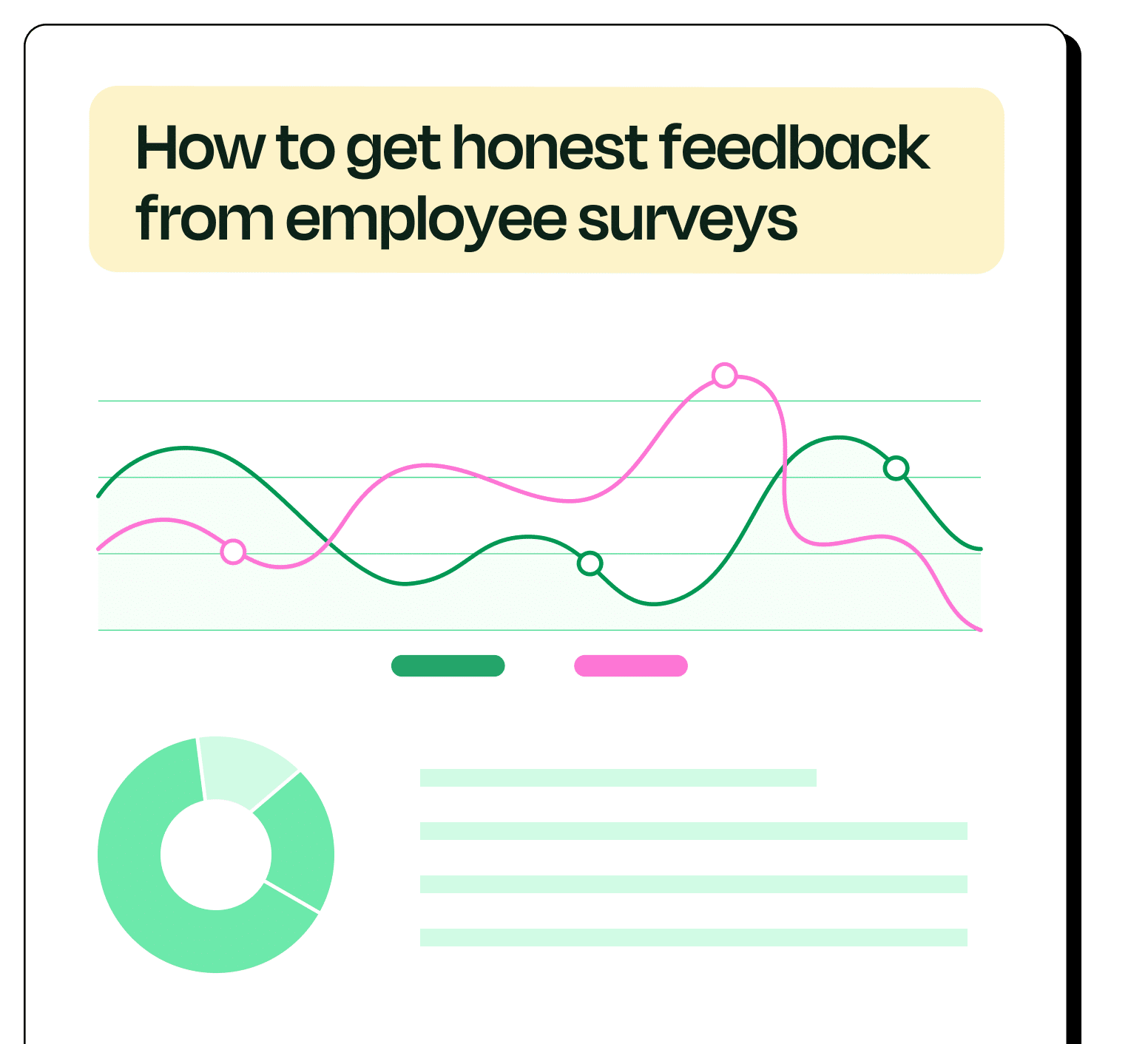
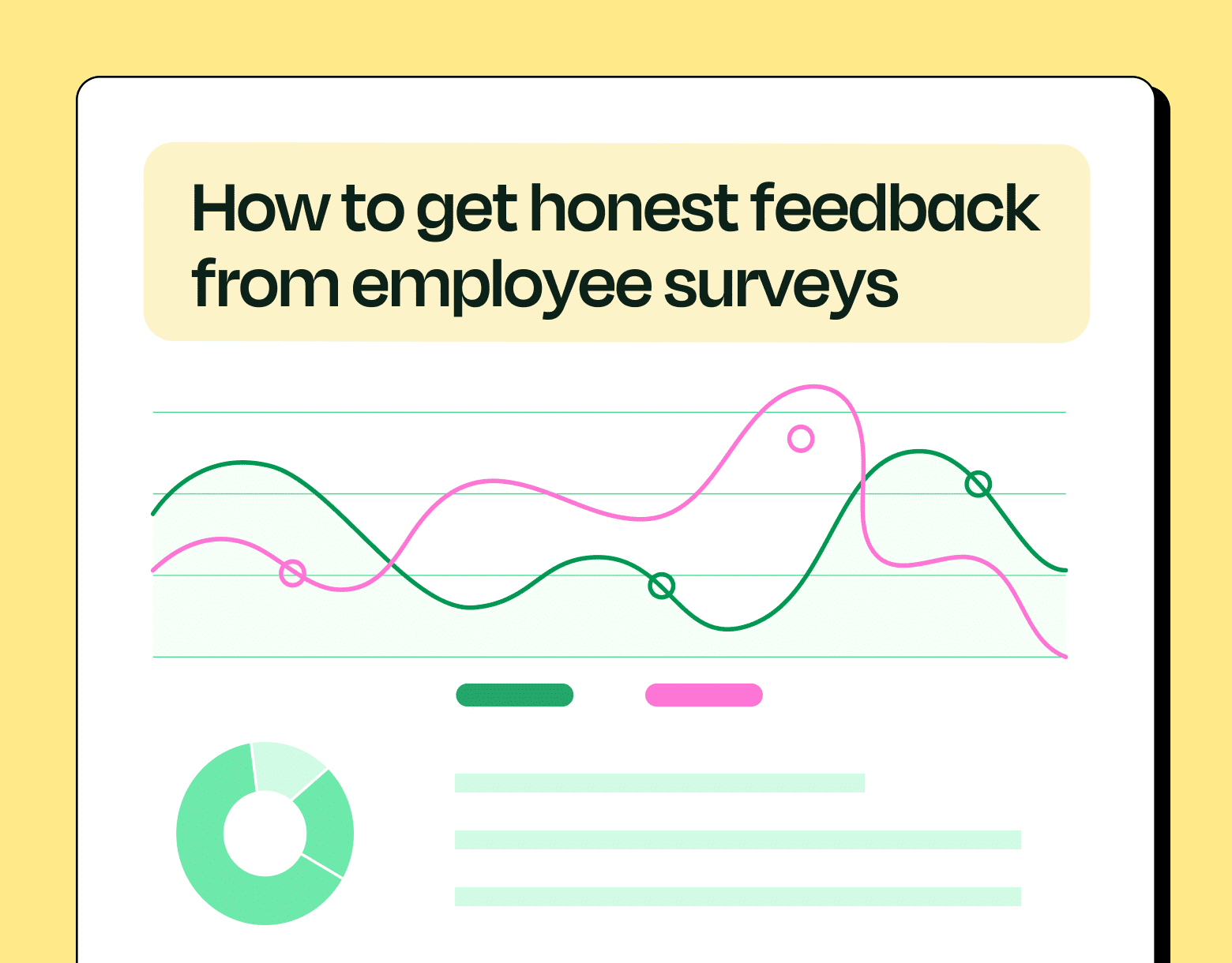
How to Create Anonymous Surveys
Learning how to create anonymous surveys isn’t complicated. But there are some important measures you’ll need to take in order to maximize participation. First, you’ll need to pick the right survey tool and ensure that surveys are quick and simple for employees to complete.
Choosing compelling and fun employee survey questions will be the next important step. In addition, you’ll need to be very clear about the anonymity of your survey in order to maximize participation. Let’s break down how to create an anonymous survey step by step:
1. Use an anonymous survey tool
Choosing the right platform to host your anonymous staff survey is vital. A quality anonymous survey tool needs to guarantee employee anonymity while still keeping things streamlined.
If employees have to take numerous steps just to open your survey, they’ll quickly lose interest and patience. With ContactMonkey, you can conduct an anonymous survey directly from your employee emails, company newsletters, or onboarding communications.
The steps for how to create an anonymous survey are pretty straightforward:
1. Access your email
Open the email in ContactMonkey’s Email Builder.
2. Configure the row
Insert an empty row from the sidebar on the right-hand side.
3. Insert a text or paragraph block
Click and drag the “Text” or “Paragraph” box from the sidebar on the right-hand side.
4. Ask your question
Format your question however you like. Check out ourbest practicesfor suggestions.
5. Insert your pulse survey content block
In the content section, drag your survey or eNPS survey into the same row as the text block so that it looks like this:
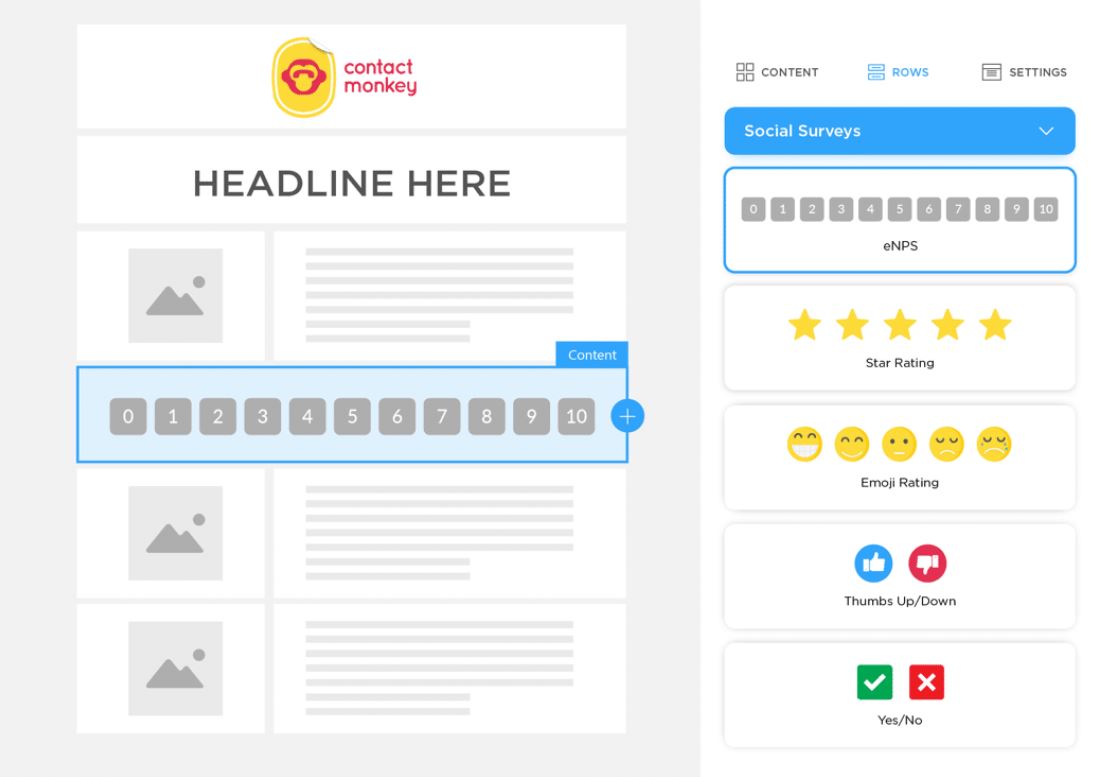
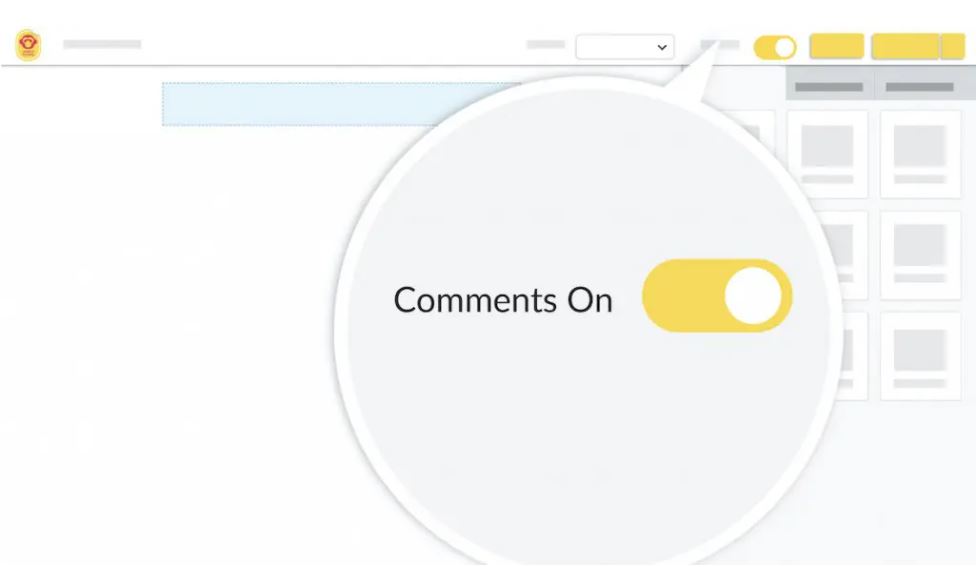
2. Communicate anonymity to employees
If employees don’t actually know that your survey is anonymous, it defeats the whole purpose and value of these types of surveys. If you’re embedding your employee surveys into employee emails or other communications, adding a simple disclaimer can make a world of difference.
3. Pick the right questions
Imagine the responses you’d get for the following questions: “Do you like your manager?” and “Does your manager show support and recognition for your work? If so, what are some ways they demonstrate this?”
Chances are, the second type of question will bring in much more valuable insights. That’s why choosing the right questions is absolutely paramount. We’ll cover anonymous survey question examples in more detail below.
7 ways to get honest feedback from employee surveys
Will your workforce tell the truth? Foster trust and openness with your employee using these tips.
Download tips

Tips for Creating Better Anonymous Surveys
Now that we’ve covered the basics of building an anonymous employee survey and looked at which questions to ask, it’s important to go over some best practices. Below we’ve outlined our top tips for conducting a quality anonymous staff survey:
Be transparent: Assure people that answers to your surveys are confidential to generate honest replies and improve response rates.
Explain the reason you’re conducting the survey: more employees will care about your survey if they know not just the “what” but the “why” behind it. Explain the bigger reason behind why you’re collecting the data, and how you intend to use it to make improvements in the company.
Make responding simple: When surveys are convenient, employees are much more likely to complete them. Reach your staff when and where they’re most likely to respond by embedding your surveys directly into employee emails.
Whenever possible, survey a large pool: By surveying as many people as possible, you can gather a more representative sample. This will help touch different personalities, opinions, and departments. This will help you get a stronger and more accurate survey result.
Always avoid questions that collect Personal Identifiable Information (PII): The very point of an anonymous staff survey is for your respondents to feel safe to be candid with their responses. If you collect PII, you will lose this trust, and potentially harm the survey results.
With ContactMonkey, you can capture employees’ attention by tapping into the resource they use the most — their email. Help keep things quick and streamlined while unlocking your email engagement data (found conveniently in your analytics dashboard). You can even schedule your surveys for specific times.
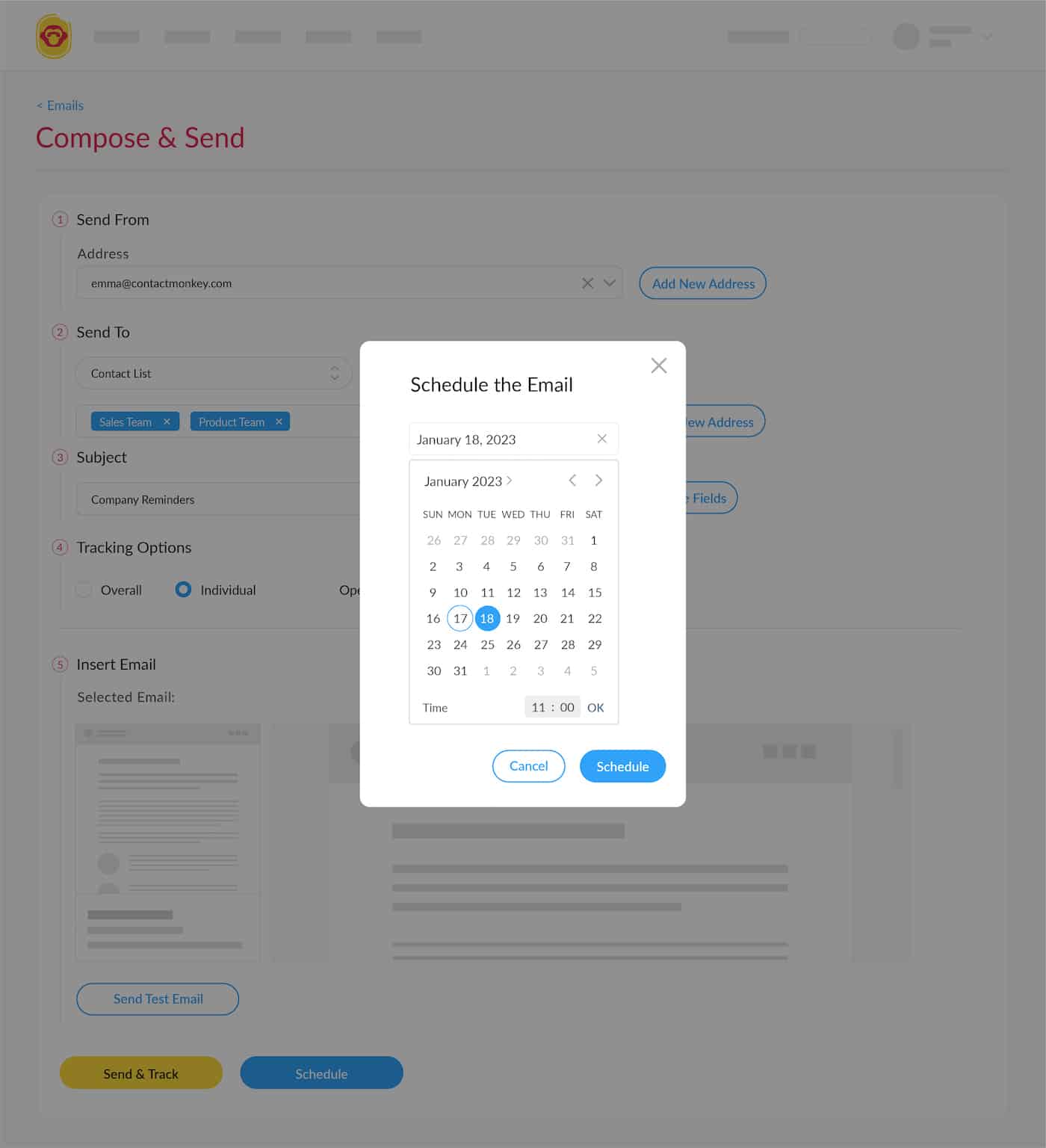
By choosing a time when employees are most likely to respond, you can maximize survey results and the quality of your data.
Act on employee feedback: Acting on employee feedback is the best way to encourage employees to regularly complete company surveys. It shows them that their input can make a difference and motivates them to take the time to continue sharing in the future.
If you’re struggling to create effective anonymous employee survey questions, try using ContactMonkey’s OpenAI ChatGPT integration to generate unique questions for your surveys. Simply write a prompt describing what you’d like to learn from your survey, and edit the generated questions according to your audience.
Why Create Anonymous Surveys?
Anonymity makes a world of difference when it comes to employee surveys. This is true whether you’re collecting employee feedback, checking for compliance with safety regulations, or sending out a diversity and inclusion questionnaire.
The principal advantage of an anonymous survey is that participants are much more likely to offer complete and candid answers. Anonymity invites respondents to include greater detail, which leads to more in-depth answers.
In sum, this type of data can help you make a real difference in your company, so it’s essential to make an effort to procure it.
Step up two-way communication across your company with our employee feedback examples.
When to Use an Anonymous Survey
Anonymity helps promote trust. Nowhere is this more pertinent than when dealing with sensitive workplace questions. It’s useful to conduct anonymous surveys when touching upon matters of health and wellness, manager performance and colleague relations.
When respondents feel that their feedback will be socially disapproved or reprimanded, having the option to stay anonymous leads to 34% more accurate and complete revelations. In other words, survey participants feel at ease speaking the truth.
On the other hand, there are instances when it’s best to resort to a confidential survey instead of an anonymous one. These include times when:
- You’re conducting a follow-up survey to examine an issue more thoroughly or gather employee feedback on changes you’ve made since the last survey.
- You’re conducting an investigation that might involve legal action and need to gather input from specific employees.
If you need to survey only a certain segment of your organization, try using custom email lists to target relevant employees and exclude employees who don’t need to see your survey. Using ContactMonkey’s List Management feature, you can create custom email lists—without needing IT—that integrate with your Human Resource Information System (HRIS) like Workday and ADP, as well as Azure Active Directory, so they’ll update automatically as employees join and leave your organization.
Benefits of Creating Anonymous Surveys
The benefits of an anonymous survey stem from its ability to build and boost trust between employees and leaders. When employees can openly share the drawbacks of a new workplace software or offer suggestions for improving leadership communications, it ultimately helps improve business performance.
Here’s a breakdown of some of the biggest benefits anonymous surveys can offer your company:
- Internal communicators and company leaders can analyze responses with less bias than they may otherwise.
- Respondents feel more comfortable sharing their genuine perspectives.
- Employees can express themselves without fear of retaliation from management, and become comfortable contributing regular feedback.
- Employee opinions can be easily shared by asking effective employee opinion survey questions.
Anonymous Survey Examples
Anonymous surveys are a terrific employee engagement idea that can provide benefits in a range of scenarios. But there are instances when these surveys are especially ideal. Let’s look at three different anonymous survey examples and see why anonymity is essential in these situations.
1. Anonymous survey about management
According to Gallup, an estimated fifty percent of employees leave their companies because of a poor relationship with their manager.
Learning how workers feel about their managers, and what concerns they have, helps the organization identify and address problems in advance. But to understand how employees truly feel, anonymity is crucial.
2. Diversity and inclusion anonymous survey
Companies that are welcoming and inclusive to people of all genders, ethnicities, sexual orientations, and religions foster safe work environments. A sense of psychological and physical safety is necessary for employees to do their best work, and it’s essential for workers to speak up if this is not the case.
However, the very lack of diversity and inclusion may result in some employees feeling uncomfortable, or unable to speak up. This is where anonymous surveys can play a sizable role in encouraging employees to share their thoughts without fear of reprisal.
3. Anonymous survey about employee wellness
Employee wellness surveys are designed to measure the factors that directly impact employee wellbeing in the workplace. Common determinants include workload, stress, work-life balance, and satisfaction with health benefits.
Due to the stigma that often precedes conversations on employee mental health and wellness, getting honest feedback from staff on these topics can be tough. Anonymous surveys mitigate this problem by offering employees a safe and secure outlet to express their thoughts.
Anonymous Employee Survey Questions
When you use anonymous surveys, employees are more likely to provide unfettered feedback. This can help you make more valuable workplace improvements in several areas.
Below, we’ve broken down the most common types of anonymous surveys and key questions you should be covering. We’ve also included anonymous employee survey templates, so you can easily import or create anonymous surveys with ContactMonkey’s email template builder.
Questions about management
- How satisfied are you with your management team?
- How does your manager encourage you and your colleagues to succeed and grow in the company?
- What would you like to see more of from your management team?
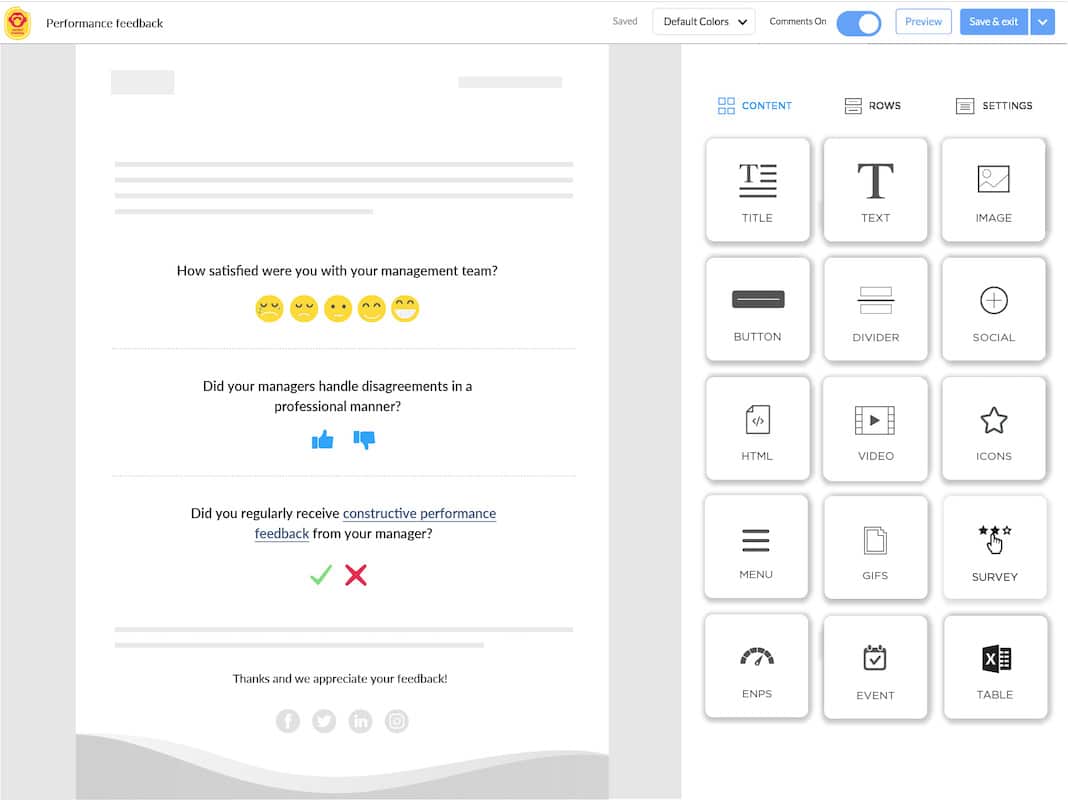
Questions about employee satisfaction
- Are you satisfied with your overall compensation and benefits? [Yes/No] If not, what sort of changes would you like to see?
- Do you see sufficient room for professional development at this company? [Yes/No] If not, what sort of added opportunities would you like to see?
- Do you have the tools and resources needed to perform your job at your best? [Yes/No] Please name any additional tools or resources you’d like to see.
Questions on employee wellness
- Do you think you have sufficient work-life balance in your current role? [Yes/No] If not, what support, resources, or initiatives would help you achieve an optimal level of work-life balance?
- Does our current health benefits package support your wellness needs and priorities? [Yes/No]
- Do you think there are enough wellness programs at our company? [Yes/No] What additional health and wellness initiatives would you like to see?
Questions on diversity and inclusion
- I believe that our organization is a safe and comfortable workplace for BIPOC individuals (Black, Indigenous, & People of Colour). [Yes/No]
- The process for career advancement is clear and transparent to employees of all ethnicities, sexual orientations, and religions. [Yes/No]
- What additional strategies/initiatives do you think would help make this company a more inclusive and diverse workplace?
Take Advantage of The Best Anonymous Survey Tool With ContactMonkey
Conducting anonymous surveys is one of the best ways to measure employee engagement. While the truth can be hard to hear, it’s important to identify concerns early on when there’s still time to strategize and develop effective solutions.
At the core of a great anonymous survey is an effective survey tool—one that allows you to gather feedback quickly and efficiently. With ContactMonkey’s best pulse survey tool, gathering employee feedback is simple and straightforward. Book a free demo and see for yourself.

